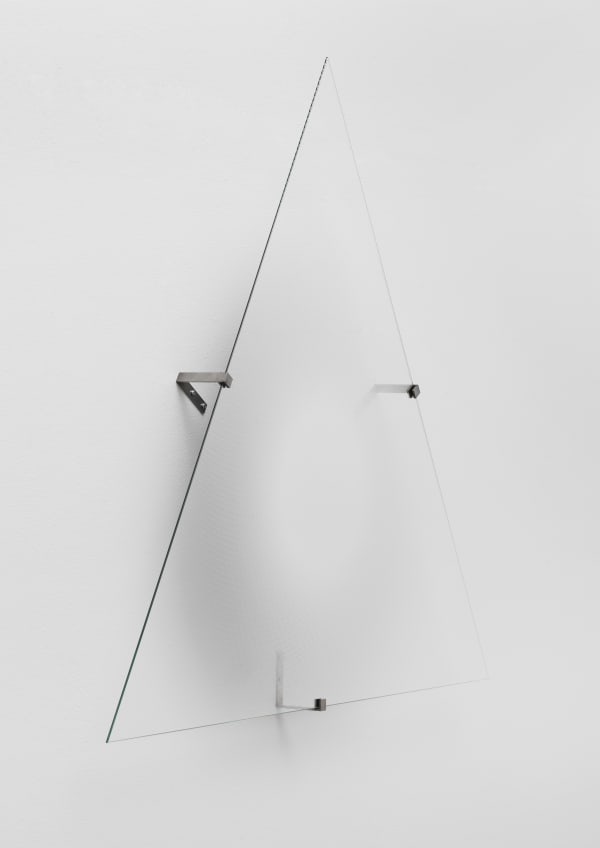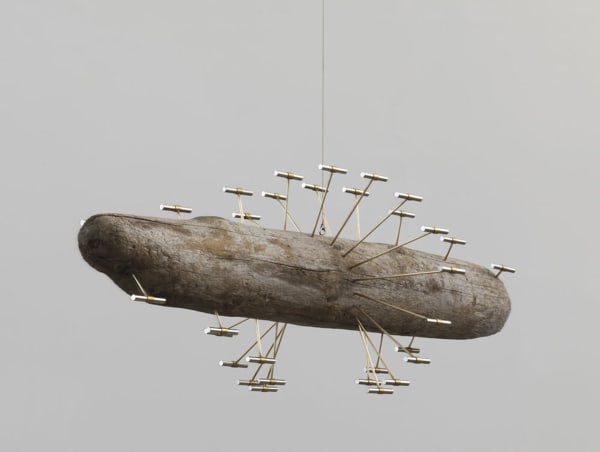ÓLAFUR ELÍASSON: Tiltrú
Icelandic nature is prominent in Elíasson’s work, and his artistic relationship with it often involves collection or documentation that is scientific in tone. The country becomes a sensory laboratory where ideas can be developed and evolved into art, as evidenced in the multiple photographic series that would seem to witness a near compulsive need for collecting. To collect, classify, and manipulate natural objects or phenomena is one way to find one’s bearings in reality and to gain control over it. As this implies the cataloguing, framing, and sometimes distorting of reality, photography is an important part of the artist’s investigation.
The hut series, 2012 exemplifies the theme running through the exhibition. In the wilderness we suddenly encounter a hut that may save our lives if it appears in a cold and foggy night. The shelter it provides carries with it certain lyrical references; it is isolated in the untamed landscape, but at the same time it can function as a meeting place for travellers or men rounding up sheep in the highlands. They meet for a short period, exchange views and experiences, and travel on. The artist chose to photograph the huts in early spring, just after the snow had melted but prior to the hiking season, so the shutters would still be in place. The hut series is closely connected to The Reykjavík series that Elíasson made in 2003 when he documented buildings in Reykjavík. The grid placement of the photographs implies a manmade system where buildings are set up in a linear formal arrangement, almost like houses in a street. The idea of The hut series is to create the feeling of a city of huts in the Icelandic outback – a dispersed city that can save lives if we are able to home in on the shelters.
Your fading self (west), 2013 is visible from outside the gallery. The large free-standing work, made from glass and held upright by a simple concrete fixture, is partly see-through, partly coated with a subtle dark fade, obscuring the view into the gallery space. The work temporarily destabilizes our conventions of seeing. It invites the viewer to move to the right and the left, to opt for a moving perspective, to see their own reflection gradually fade or emerge.
Five wall-mounted triangular mirrors (Hesitant movement sky; Hesitant movement ground; Hesitant movement up; Hesitant movement right and Hesitant you, all from 2013) equally throw the viewer’s visual perception off-balance and question familiar ways of seeing. The viewer’s perception is sometimes dissolved and sometimes reformed again in a familiar manner. When we move in front of these works we are either lost or we reappear. We find it hard to place ourselves correctly and we become mindful of concepts like centre and periphery that are of course only constructs of our imagination. The viewer is asked to examine the works and to develop their impact with his movements in the gallery. It is necessary for us to trust our own perceptions and intuition.
Hanging in the gallery space is an instrument in which we place our complete trust, a compass made of driftwood that is encircled by metal pins of varying lengths, each holding small cylindrical magnets. Trust compass, 2013, is an example of the on-going studies of Elíasson into the instruments that help us with the location and mapping of any given space. Here we enter the world of navigation The placement and length of each pin holding the magnets is calculated according to the Fibonacci sequence and the principle of the golden ratio. The 36 magnets (two placed inside the driftwood at either end) point towards the 360 degrees that we use to define a circle. Our knowledge of magnets leads to an understanding that this is a compass, a tool that can help us navigate the world we inhabit and that can save our lives when we need to find shelter. Despite its unusual appearance, the compass is placed firmly on the north-south axis and helps the viewer to locate himself on his travels through the gallery.
The works in the exhibition raise questions of trust in our own senses and in the possibilities of navigating our way through life unscathed. Whether we are traveling toward a set final goal or between points in our daily lives, the journey requires shelter from time to time, as well as acquiring a feeling for our own physical experience in the face of the elements of nature. We need to trust our senses.
- Gudni Tómasson











